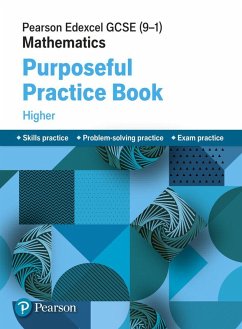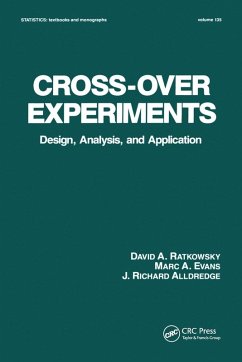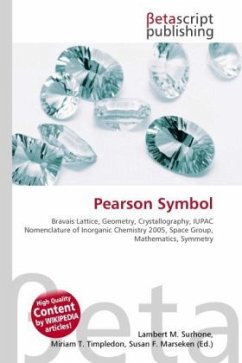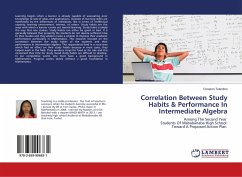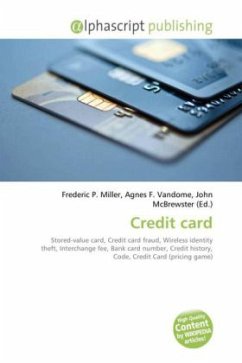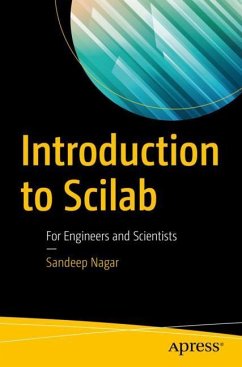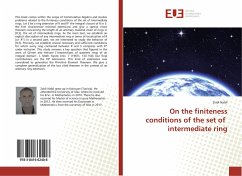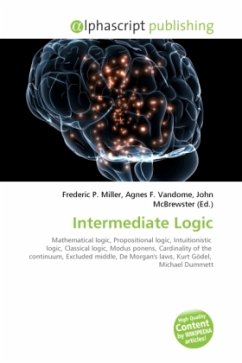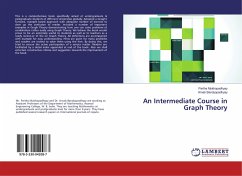
Intermediate Algebra Through Applications Plus NEW MyMathLab with Pearson eText, Access Card Package
Versandkostenfrei!
Liefertermin unbestimmt
150,99 €
inkl. MwSt.
The Akst/Bragg seriesÆ success is built around clear and concise writing, a side-by-side ôteach by exampleö approach, and integrated applications throughout that help students achieve a conceptual understanding. The user-friendly design offers a distinctive side-by-side format that pairs examples and their solutions with corresponding practice exercises. Students understand from the very beginning that doing math is an essential part of learning it. Motivational, real-world applications demonstrate how integral mathematical understanding is to a variety of disciplines, careers, and everyday situations.
Product Description
ALERT: Before you purchase, check with your instructor or review your course syllabus to ensure that you select the correct ISBN. Several versions of Pearson's MyLab & Mastering products exist for each title, including customized versions for individual schools, and registrations are not transferable. In addition, you may need a CourseID, provided by your instructor, to register for and use Pearson's MyLab & Mastering products.
Packages
Access codes for Pearson's MyLab & Mastering products may not be included when purchasing or renting from companies other than Pearson; check with the seller before completing your purchase.
Used or rental books
If you rent or purchase a used book with an access code, the access code may have been redeemed previously and you may have to purchase a new access code.
Access codes
Access codes that are purchased from sellers other than Pearson carry a higher risk of being either the wrong ISBN or a previously redeemed code. Check with the seller prior to purchase.
--
The Akst/Bragg series’ success is built around clear and concise writing, a side-by-side “teach by example” approach, and integrated applications throughout that help students achieve a conceptual understanding. The user-friendly design offers a distinctive side-by-side format that pairs examples and their solutions with corresponding practice exercises. Students understand from the very beginning that doing math is an essential part of learning it. Motivational, real-world applications demonstrate how integral mathematical understanding is to a variety of disciplines, careers, and everyday situations.
Features + Benefits
A clear and concise, student-focused text that teaches by example and through applications
Pretests and Posttests promote individualized learning by helping students gauge their level of understanding of chapter topics both at the beginning and at the end of each chapter. These are particularly useful in a self-paced lab or digital environment.
Section Objectives clearly state the learning objective at the beginning of each section to identify topics to be covered. In this revision, the end-of-section exercises more fully align with the learning objectives in order to encourage and facilitate review.
A distinctive Side-by-Side Example/Practice Format pairs examples and their solutions with practice exercises, and promotes active learning from the start. Students complete practice exercises while they follow alongside the step-by-step solution for the example exercises. Students use this format for solving skill exercises and application problems throughout the text. This feature was redesigned to follow a notebook style, which encourages students to write in the text as they follow along.
An early introduction to algebra allows instructors to show students the connection between arithmetic and algebra and helps students grasp key algebraic concepts early in the course.
Examples and Exercises are based on real data with additional and more varied applied problems that are useful, realistic, and authentic.
Applications show how math can be used in a wide range of disciplines, careers, and everyday situations. Throughout the text, students are exposed to relevant applications to help answer the often-asked question "When will I ever use this?"
Cultural Notes show how mathematics has evolved in many cultures throughout the world over the centuries. Each chapter features a compelling Cultural Note that investigates and illustrates the origins of mathematical concepts.
Exercise and End-of-Chapter Highlights
A variety of exercises gives students the practice they need to master the material.
Paired Exercises closely reflect the same learning objective. Almost one of every problem type covered in the textbook is now assignable in MyMathLab!
Mixed Practice exercises, located in nearly every section's exercise sets, reinforce students' knowledge of topics and problem-solving skills covered in the section.
Mathematically Speaking exercises help students understand and master mathematical vocabulary.
Journal Entry exercises help students understand concepts better by asking them to explain concepts in their own words. Open-ended questions throughout the text give students the opportunity to check their understanding. Students can build on these questions by keeping individual journals. Suggestions for optional journal entries are included in the Annotated Instructor's Edition.
Mindstretchers are engaging activities that incorporate investigation, critical thinking, reasoning, pattern recognition, and writing exercises in one comprehensive problem set, along with corresponding group work and historical connections.
Application Exercises at the end of the section show how to apply the topic at hand in a wide range of contexts.
End-of-chapter material offers students a wealth of review- and retention-oriented material to reinforce the concepts presented in current and previous chapters.
NEW! Say Why Exercises are fill-in-the blank problems that provide practice in reasoning and communicating mathematical ideas. These are located at the beginning of each chapter review.
Key Concepts and Skills give students quick reminders of the chapter's most important elements and provide a one-stop quick review of the chapter material. Each concept/skill is keyed to the section in which it was introduced and is accompanied by a brief description and example.
Chapter Review exercises are keyed to the corresponding sections for easy student reference. Numerous mixed application problems complete each of these exercise sets to help students test their overall comprehension of chapter topics.
Each chapter's Posttest allows students to practice for their classroom test.
Cumulative Review Exercises build on the mathematical content covered in previous chapters.
Optional Technology Features
Calculator Inserts show ways to use calculators and computer software to solve section problems.
Video Resources on DVD with Chapter Test Prep Video's are available on DVD and in MyMathLab. Included is a video lecture for each section of the textbook and a Chapter Test Prep Video for all Posttest exercises for each chapter.
Study Skills Features
Math Study Skills Foldout provides tips on organization, test preparation, time management, and more for a variety of course formats.
Student Tips offer helpful reminders and suggestions for understanding certain concepts, skills, or rules, and advice on avoiding common mistakes.
For Extra Help boxes, found at the top of the first page of every section's exercise set, direct students to helpful resources that will aid in their study of the material.
For Instructors
Teaching Tips, found in the Annotated Instructor's Edition, help instructors with explanations, reminders of previously covered material, and tips on encouraging students to write in a journal.
Journal Entry Suggestions are included in the Annotated Instructor's Edition to go along with the Journal Entry exercises in the book.
Preface
1. Algebra Basics
1.1 Introduction to Real Numbers
1.2 Operations with Real Numbers
1.3 Properties of Real Numbers
1.4 Laws of Exponents and Scientific Notation
1.5 Algebraic Expressions: Translating, Evaluating, and Simplifying
2. Linear Equations and Inequalities
2.1 Solving Linear Equations
2.2 Solving Literal Equations and Formulas
2.3 Solving Linear Inequalities
2.4 Solving Compound Inequalities
2.5 Solving Absolute Value Equations and Inequalities
3. Graphs, Linear Equations and Inequalities, and Functions
3.1 The Rectangular Coordinate System
3.2 Slope
3.3 Graphing Linear Equations
3.4 More on Graphing Linear Equations
3.5 Graphing Linear Inequalities
3.6 Introduction to Functions
4. Systems of Linear Equations and Inequalities
4.1 Solving Systems of Linear Equations by Graphing
4.2 Solving Systems of Linear Equations Algebraically
4.3 Solving Systems of Linear Equations in Three Variables
4.4 Solving Systems of Linear Equations by Using Matrices
4.5 Solving Systems of Linear Inequalities
5. Polynomials
5.1 Addition and Subtraction of Polynomials
5.2 Multiplication of Polynomials
5.3 Division of Polynomials
5.4 The Greatest Common Factor and Factoring by Grouping
5.5 Factoring Trinomials
5.6 Special Factoring
5.7 Solving Quadratic Equations by Factoring
6. Rational Expressions and Equations
6.1 Multiplication and Division of Rational Expressions
6.2 Addition and Subtraction of Rational Expressions
6.3 Complex Rational Expressions
6.4 Solving Rational Equations
6.5 Variation
7. Radical Expressions and Equations
7.1 Radical Expressions and Rational Exponents
7.2 Simplifying Radical Expressions
7.3 Addition and Subtraction of Radical Expressions
7.4 Multiplication and Division of Radical Expressions
7.5 Solving Radical Equations
7.6 Complex Numbers
8. Quadratic Equations, Functions, and Inequalities
8.1 Solving Quadratic Equations: The Square Root Property of Equality; Completing the Square
8.2 Solving Quadratic Equations: The Quadratic Formula
8.3 More on Quadratic Equations
8.4 Graphing Quadratic Functions
8.5 Solving Quadratic and Rational Inequalities
9. Exponential and Logarithmic Functions
9.1 The Algebra of Functions and Inverse Functions
9.2 Exponential Functions
9.3 Logarithmic Functions
9.4 Properties of Logarithms
9.5 Common Logarithms, Natural Logarithms, and Change of Base
9.6 Exponential and Logarithmic Equations
10. Conic Sections
10.1 Introduction to Conics; The Parabola
10.2 The Circle
10.3 The Ellipse and the Hyperbola
10.4 Solving Nonlinear Systems of Equations
10.5 Solving Nonlinear Inequalities and Nonlinear Systems of Inequalities
Appedixes
A.1 Table of Symbols
A.2 Introduction to Graphing Calculators
A.3 Determinants and Cramer's Rule
A.4 Synthetic Division
Answers
Glossary
Index
Product Description
ALERT: Before you purchase, check with your instructor or review your course syllabus to ensure that you select the correct ISBN. Several versions of Pearson's MyLab & Mastering products exist for each title, including customized versions for individual schools, and registrations are not transferable. In addition, you may need a CourseID, provided by your instructor, to register for and use Pearson's MyLab & Mastering products.
Packages
Access codes for Pearson's MyLab & Mastering products may not be included when purchasing or renting from companies other than Pearson; check with the seller before completing your purchase.
Used or rental books
If you rent or purchase a used book with an access code, the access code may have been redeemed previously and you may have to purchase a new access code.
Access codes
Access codes that are purchased from sellers other than Pearson carry a higher risk of being either the wrong ISBN or a previously redeemed code. Check with the seller prior to purchase.
--
The Akst/Bragg series’ success is built around clear and concise writing, a side-by-side “teach by example” approach, and integrated applications throughout that help students achieve a conceptual understanding. The user-friendly design offers a distinctive side-by-side format that pairs examples and their solutions with corresponding practice exercises. Students understand from the very beginning that doing math is an essential part of learning it. Motivational, real-world applications demonstrate how integral mathematical understanding is to a variety of disciplines, careers, and everyday situations.
Features + Benefits
A clear and concise, student-focused text that teaches by example and through applications
Pretests and Posttests promote individualized learning by helping students gauge their level of understanding of chapter topics both at the beginning and at the end of each chapter. These are particularly useful in a self-paced lab or digital environment.
Section Objectives clearly state the learning objective at the beginning of each section to identify topics to be covered. In this revision, the end-of-section exercises more fully align with the learning objectives in order to encourage and facilitate review.
A distinctive Side-by-Side Example/Practice Format pairs examples and their solutions with practice exercises, and promotes active learning from the start. Students complete practice exercises while they follow alongside the step-by-step solution for the example exercises. Students use this format for solving skill exercises and application problems throughout the text. This feature was redesigned to follow a notebook style, which encourages students to write in the text as they follow along.
An early introduction to algebra allows instructors to show students the connection between arithmetic and algebra and helps students grasp key algebraic concepts early in the course.
Examples and Exercises are based on real data with additional and more varied applied problems that are useful, realistic, and authentic.
Applications show how math can be used in a wide range of disciplines, careers, and everyday situations. Throughout the text, students are exposed to relevant applications to help answer the often-asked question "When will I ever use this?"
Cultural Notes show how mathematics has evolved in many cultures throughout the world over the centuries. Each chapter features a compelling Cultural Note that investigates and illustrates the origins of mathematical concepts.
Exercise and End-of-Chapter Highlights
A variety of exercises gives students the practice they need to master the material.
Paired Exercises closely reflect the same learning objective. Almost one of every problem type covered in the textbook is now assignable in MyMathLab!
Mixed Practice exercises, located in nearly every section's exercise sets, reinforce students' knowledge of topics and problem-solving skills covered in the section.
Mathematically Speaking exercises help students understand and master mathematical vocabulary.
Journal Entry exercises help students understand concepts better by asking them to explain concepts in their own words. Open-ended questions throughout the text give students the opportunity to check their understanding. Students can build on these questions by keeping individual journals. Suggestions for optional journal entries are included in the Annotated Instructor's Edition.
Mindstretchers are engaging activities that incorporate investigation, critical thinking, reasoning, pattern recognition, and writing exercises in one comprehensive problem set, along with corresponding group work and historical connections.
Application Exercises at the end of the section show how to apply the topic at hand in a wide range of contexts.
End-of-chapter material offers students a wealth of review- and retention-oriented material to reinforce the concepts presented in current and previous chapters.
NEW! Say Why Exercises are fill-in-the blank problems that provide practice in reasoning and communicating mathematical ideas. These are located at the beginning of each chapter review.
Key Concepts and Skills give students quick reminders of the chapter's most important elements and provide a one-stop quick review of the chapter material. Each concept/skill is keyed to the section in which it was introduced and is accompanied by a brief description and example.
Chapter Review exercises are keyed to the corresponding sections for easy student reference. Numerous mixed application problems complete each of these exercise sets to help students test their overall comprehension of chapter topics.
Each chapter's Posttest allows students to practice for their classroom test.
Cumulative Review Exercises build on the mathematical content covered in previous chapters.
Optional Technology Features
Calculator Inserts show ways to use calculators and computer software to solve section problems.
Video Resources on DVD with Chapter Test Prep Video's are available on DVD and in MyMathLab. Included is a video lecture for each section of the textbook and a Chapter Test Prep Video for all Posttest exercises for each chapter.
Study Skills Features
Math Study Skills Foldout provides tips on organization, test preparation, time management, and more for a variety of course formats.
Student Tips offer helpful reminders and suggestions for understanding certain concepts, skills, or rules, and advice on avoiding common mistakes.
For Extra Help boxes, found at the top of the first page of every section's exercise set, direct students to helpful resources that will aid in their study of the material.
For Instructors
Teaching Tips, found in the Annotated Instructor's Edition, help instructors with explanations, reminders of previously covered material, and tips on encouraging students to write in a journal.
Journal Entry Suggestions are included in the Annotated Instructor's Edition to go along with the Journal Entry exercises in the book.
Preface
1. Algebra Basics
1.1 Introduction to Real Numbers
1.2 Operations with Real Numbers
1.3 Properties of Real Numbers
1.4 Laws of Exponents and Scientific Notation
1.5 Algebraic Expressions: Translating, Evaluating, and Simplifying
2. Linear Equations and Inequalities
2.1 Solving Linear Equations
2.2 Solving Literal Equations and Formulas
2.3 Solving Linear Inequalities
2.4 Solving Compound Inequalities
2.5 Solving Absolute Value Equations and Inequalities
3. Graphs, Linear Equations and Inequalities, and Functions
3.1 The Rectangular Coordinate System
3.2 Slope
3.3 Graphing Linear Equations
3.4 More on Graphing Linear Equations
3.5 Graphing Linear Inequalities
3.6 Introduction to Functions
4. Systems of Linear Equations and Inequalities
4.1 Solving Systems of Linear Equations by Graphing
4.2 Solving Systems of Linear Equations Algebraically
4.3 Solving Systems of Linear Equations in Three Variables
4.4 Solving Systems of Linear Equations by Using Matrices
4.5 Solving Systems of Linear Inequalities
5. Polynomials
5.1 Addition and Subtraction of Polynomials
5.2 Multiplication of Polynomials
5.3 Division of Polynomials
5.4 The Greatest Common Factor and Factoring by Grouping
5.5 Factoring Trinomials
5.6 Special Factoring
5.7 Solving Quadratic Equations by Factoring
6. Rational Expressions and Equations
6.1 Multiplication and Division of Rational Expressions
6.2 Addition and Subtraction of Rational Expressions
6.3 Complex Rational Expressions
6.4 Solving Rational Equations
6.5 Variation
7. Radical Expressions and Equations
7.1 Radical Expressions and Rational Exponents
7.2 Simplifying Radical Expressions
7.3 Addition and Subtraction of Radical Expressions
7.4 Multiplication and Division of Radical Expressions
7.5 Solving Radical Equations
7.6 Complex Numbers
8. Quadratic Equations, Functions, and Inequalities
8.1 Solving Quadratic Equations: The Square Root Property of Equality; Completing the Square
8.2 Solving Quadratic Equations: The Quadratic Formula
8.3 More on Quadratic Equations
8.4 Graphing Quadratic Functions
8.5 Solving Quadratic and Rational Inequalities
9. Exponential and Logarithmic Functions
9.1 The Algebra of Functions and Inverse Functions
9.2 Exponential Functions
9.3 Logarithmic Functions
9.4 Properties of Logarithms
9.5 Common Logarithms, Natural Logarithms, and Change of Base
9.6 Exponential and Logarithmic Equations
10. Conic Sections
10.1 Introduction to Conics; The Parabola
10.2 The Circle
10.3 The Ellipse and the Hyperbola
10.4 Solving Nonlinear Systems of Equations
10.5 Solving Nonlinear Inequalities and Nonlinear Systems of Inequalities
Appedixes
A.1 Table of Symbols
A.2 Introduction to Graphing Calculators
A.3 Determinants and Cramer's Rule
A.4 Synthetic Division
Answers
Glossary
Index
The Akst/Bragg series' success is built around clear and concise writing, a side-by-side "teach by example" approach, and integrated applications throughout that help students achieve a conceptual understanding. The user-friendly design offers a distinctive side-by-side format that pairs examples and their solutions with corresponding practice exercises. Students understand from the very beginning that doing math is an essential part of learning it. Motivational, real-world applications demonstrate how integral mathematical understanding is to a variety of disciplines, careers, and everyday situations.
Bei diesem Produkt handelt es sich um ein Bundle, bestehend aus einem Buch und einem digitalen Mehrwert.
Deshalb wird dieses Produkt auf der Rechnung mit 19% MwSt ausgewiesen.




